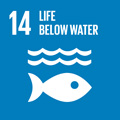- Docente: Marco Cantonati
- Credits: 6
- SSD: BIO/02
- Language: Italian
- Teaching Mode: In-person learning (entirely or partially)
- Campus: Bologna
- Corso: Second cycle degree programme (LM) in Biodiversity and Evolution (cod. 6771)
Learning outcomes
The main educational objective of this course is to offer an advanced-level overview of the characteristics of all the main groups of photoautotrophic organisms, discussed by identifying the key morphological, physiological, functional, ecological adaptations, which are also the basis for the use of these organisms as indicators and proxies in environmental sciences. Special emphasis is on the acquisition of professional knowledge on distinctive characters, procedures, materials and resources (texts, websites, etc.) for the taxonomic identification of organisms of the groups considered, i.e.: cyanoprokaryotes, diatoms, all the main algal groups, bryophytes (hornworts, liverworts, mosses), tracheophytes (vascular plants: lycophytes, ferns, Gymnosperms, Angiosperms).
Course contents
Taxonomy, systematics, evolution. Biological events through geologic time. Cyanoprokaryotes (and Prochlorophytes). Endosymbiosis. Red algae. Cryptophytes. Dinoflagellates. Algal blooms. Xanthophytes. Diatoms. Chrysophytes. Brown algae. Euglenophytes. Green algae. Lichens. Desmids. Charophytes. Algal groups thought to be the ancestors of land plants. Plant adaptations to subaerial (terrestrial) environments. Bryophytes (hornworts, liverworts, acrocarpous and pleurocarpous mosses). Pteridophytes (horsetails, lycopods, selaginellas, isoetians, true ferns and their life cycle). Gymnosperms (Cycads, Ginkgo, Gnetophytes, Conifers). Angiosperms: origin, basal groups, Mesangiosperms. Further information on: Magnoliaceae; Liliaceae; Orchidaceae; Arecaceae; Poaceae, Cyperaceae, Juncaceae; Ranunculaceae; Euphorbiaceae; Fabaceae; Rosaceae; Myrtaceae; Brassicaceae; Cactaceae; Ericaceae; Lamiaceae; Solanaceae; Rubiaceae; Asteraceae; Apiaceae. Notes on: Piperaceae, Lauraceae, Moraceae, Melastomataceae, Acanthaceae, Scrophulariaceae, Asclepiadaceae, Boraginaceae. Microscopy laboratories: - Algae from the rocky shores of Lake Garda: green algae, red algae, diatoms (including techniques for creating permanent preparations and their observation), angiosperms. Integrated with cyanobacteria, green algae, and other materials that we will recover in the Botanical Garden. - Siliceous spring of the Adamello-Brenta Natural Park: focus on liverworts, mosses, and ferns. Integrated with horsetails and other materials that we will recover in the Botanical Garden. - Field trip to the Botanical Garden: The various sections of the Botanical Garden will be used for a live review of all the major groups covered in the course. Thanks to materials collected from the fountain (here we will also collect cyanoprokaryotes), the pond, and the various pools, the taxonomy of Lemnoideae genera and species is explored, including through microscopic observations. Staining is used to highlight the presence of phosphatase (BCIP). Introductory lecture: Selected Families of angiosperms relevant to inland waters. - Field trip to the Botanical Garden, with particular attention to tree species. Introductory lecture: Selected families of angiosperms relevant to temperate deciduous forests. Field trip to the Labante Petrifying Spring: this allows us to observe representatives of all the major groups covered in the course, from cyanoprokaryotes to angiosperms, in nature (also with a portable microscope). Practical fieldwork at the Parco dei Gessi Bolognesi focused on the analysis of plant diversity (taxonomic level) and, specifically, on the observation and identification of Angiosperms.
Readings/Bibliography
Study materials on Virtuale.
Strasburger – Botanica, Evoluzione, Sistematica ed Ecologia (Vol. II), 10ª ed. Volume 2 – EVOLUZIONE, SISTEMATICA ED ECOLOGIA
Judd W.S. , Christopher S. Campbell, Elizabeth A. Kellogg, Peter F. Stevens, Michael J. Donoghue. 2019. Botanica Sistematica - Un approccio filogenetico. ISBN: 978-88-299-2998-6. 708 pp.
Teaching methods
Lectures with explanatory materials and videos. Lecture-workshops (lectures with PowerPoint and the opportunity to observe materials related to the taxonomic groups covered). Microscopy workshops with preparations and stainings.
Excursions and practical fieldwork.
Due to the types of activities and teaching methods adopted, attendance at this training program requires all students to complete Modules 1 and 2 via e-learning and participate in Module 3, which is a specific training course on health and safety in the workplace. Information on the dates and attendance methods for Module 3 can be found in the dedicated section of the program website.
Assessment methods
Oral exam with at least three main questions discussed, one of which related to the labs, lectures, or field trips.
Option to submit (at least the evening before the exam) a report (preferably in PowerPoint or Word format), with extensive illustrations, on one of the labs or field trips. A positive evaluation will improve the final exam score.
Students with learning disorders and\or temporary or permanent disabilities: please, contact the office responsible (https://site.unibo.it/studenti-con-disabilita-e-dsa/en/for-students ) as soon as possible so that they can propose acceptable adjustments. The request for adaptation must be submitted in advance (15 days before the exam date) to the lecturer, who will assess the appropriateness of the adjustments, taking into account the teaching objectives.
Teaching tools
PowerPoint presentations. Selected videos. Fresh materials relating to the taxonomic groups treated, even outside of laboratories and laboratory-lessons.
Equipment for laboratory and field exercises (including equipment for sampling water and sediment and for measuring ecological factors to characterize the habitats of photoautotrophic communities).
Office hours
See the website of Marco Cantonati
SDGs



This teaching activity contributes to the achievement of the Sustainable Development Goals of the UN 2030 Agenda.
